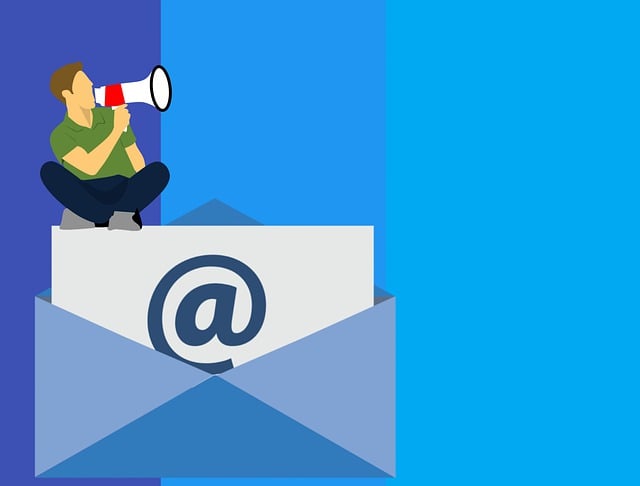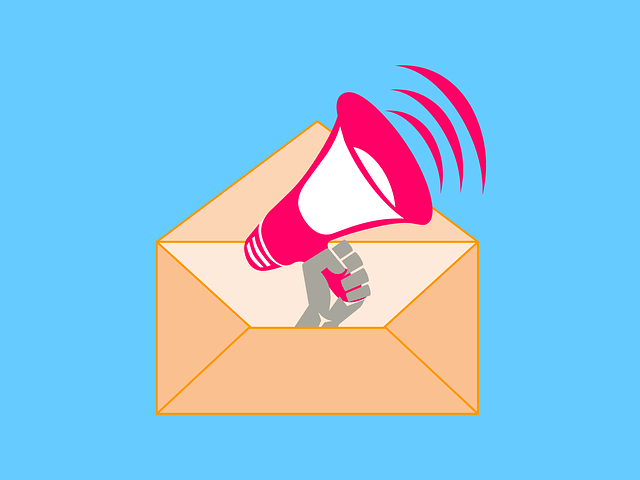In the ever-evolving landscape of digital marketing, two strategies have emerged as powerhouses for B2B businesses: email marketing and social media advertising. These two approaches have their own unique strengths and benefits, but the question remains: which one is more effective?
To find the answer, we must delve into the world of targeting and reach, cost efficiency, personalization and engagement, tracking and analytics, lead generation and conversion, and how to integrate both strategies seamlessly.
By exploring these key factors, we can uncover the true potential of each method and determine which one will yield the best results for your B2B business.
So, buckle up and get ready to dive into the world of B2B email marketing and social media advertising, and discover which one will take your business to new heights.
Key Takeaways
- B2B email marketing excels in precise targeting through audience segmentation, leading to higher engagement and conversion rates compared to social media advertising.
- Social media advertising is more cost-efficient than B2B email marketing, offering a larger reach at a lower cost per click or impression.
- Personalization and engagement are important in both strategies, with email segmentation allowing for tailored messages and social media engagement building a brand community.
- Integration of both B2B email marketing and social media advertising strategies offers increased reach, enhanced targeting, and improved engagement.
Targeting and Reach
When it comes to reaching a specific audience, b2b email marketing outshines social media advertising with its precise targeting capabilities.
With audience segmentation, you can tailor your email campaigns to specific demographics, industries, or job titles, ensuring that your message reaches the right people at the right time. This level of personalization allows for higher engagement and conversion rates compared to the broad approach of social media advertising.
Additionally, b2b email marketing allows for content relevancy, as you can provide valuable and relevant information to your audience based on their specific needs and interests. By delivering tailored content directly to their inbox, you establish a sense of trust and credibility.
Now, let’s transition into the next section about cost efficiency.
Cost Efficiency
In terms of cost efficiency, it’s clear that utilizing social media advertising is the way to go. When comparing the return on investment (ROI) between b2b email marketing and social media advertising, the latter proves to be more effective in reaching a larger audience at a lower cost. With budget optimization in mind, social media platforms offer a range of targeting options that allow businesses to reach their desired audience with precision. Additionally, the cost per click (CPC) or cost per impression (CPM) in social media advertising tends to be lower compared to the cost per lead (CPL) in b2b email marketing. To further emphasize the cost benefits, consider the following comparison:
| B2B Email Marketing | Social Media Advertising | |
|---|---|---|
| Reach | Limited | Extensive |
| Cost per Lead | Higher | Lower |
By leveraging the cost efficiency of social media advertising, businesses can optimize their marketing budget and achieve better results. Moving forward, let’s explore how personalization and engagement play a crucial role in maximizing the effectiveness of these marketing strategies.
Personalization and Engagement
Immerse yourself in the world of personalized marketing strategies and engagement techniques to unlock the true potential of your audience reach and optimize your campaign results.
When it comes to personalization and engagement, both b2b email marketing and social media advertising have their strengths. However, email segmentation gives you the power to tailor your message specifically to your audience’s needs and interests.
With social media engagement, you can interact with your audience in real-time and build a community around your brand. To fully capitalize on personalization and engagement, consider these techniques:
- Segment your email list based on demographics, interests, and behavior.nn2. Use dynamic content to deliver personalized messages based on individual preferences.nn3. Encourage user-generated content and foster a sense of community on social media platforms.nn4. Leverage social media analytics to measure engagement and adjust your strategy accordingly.
As you dive into the world of tracking and analytics, you’ll discover how to refine your marketing approach even further.
Tracking and Analytics
To fully optimize your marketing campaign, tracking and analyzing data is crucial in order to make informed decisions and continuously improve your strategies. When it comes to b2b email marketing and social media advertising, tracking and analytics play a vital role in determining their effectiveness.
Email open rates provide valuable insights into how engaged your audience is with your content. By monitoring these rates, you can identify which subject lines and email designs resonate the most with your recipients.
On the other hand, social media metrics such as reach, impressions, and engagement rate can help you gauge the effectiveness of your social media advertising efforts. By analyzing these metrics, you can identify the type of content that resonates with your target audience and refine your social media strategy accordingly.
Transitioning into the next section, lead generation and conversion, it is important to understand how tracking and analytics can impact these key areas.
Lead Generation and Conversion
Maximize your lead generation and conversion rates by utilizing tracking and analytics to gain valuable insights into your audience’s behavior and preferences.
By tracking the performance of your email marketing campaigns and social media advertising efforts, you can identify which strategies are most effective in capturing leads and converting them into customers.
With this data-driven approach, you can tailor your lead nurturing efforts to provide relevant and engaging content that resonates with your audience.
Use analytics to determine which types of content perform best, whether it’s informative blog posts, engaging videos, or interactive quizzes.
By consistently analyzing and optimizing your lead generation tactics, you can ensure that your efforts are focused on attracting and converting high-quality leads.
Take the next step in integrating both strategies by leveraging the insights gained from tracking and analytics to create a comprehensive marketing approach.
Integrating Both Strategies
Dive into the seamless integration of tracking and analytics to create a harmonious marketing symphony that captivates your audience and propels your lead generation and conversion efforts to new heights. By integrating both B2B email marketing and social media advertising strategies, you can achieve cross-platform collaboration and maximize audience penetration.
Here are three key benefits of integrating both strategies:
-
Increased reach: Combining the power of email marketing with social media advertising allows you to reach a wider audience and increase brand visibility across multiple platforms.
-
Enhanced targeting: By leveraging the tracking and analytics capabilities of both channels, you can create highly targeted campaigns that resonate with your audience and drive better results.
-
Improved engagement: Integrating email marketing and social media advertising enables you to engage with your audience at different touchpoints, increasing the chances of capturing their attention and converting them into leads.
Integrating B2B email marketing and social media advertising is a winning formula for maximizing audience penetration and achieving better results.
Frequently Asked Questions
How can I measure the success of my B2B email marketing campaign in terms of targeting and reach?
To measure the success of your B2B email marketing campaign in terms of targeting and reach, you need to focus on two key aspects: targeting and segmentation, and measuring ROI.
Firstly, ensure that your emails are reaching the right audience by segmenting your email list based on relevant criteria.
Secondly, track the performance of your campaign by monitoring metrics such as open rates, click-through rates, and conversions. By analyzing these data points, you can assess the effectiveness of your targeting and segmentation efforts and determine the ROI of your email marketing campaign.
What are some cost-effective strategies for social media advertising in the B2B sector?
When it comes to cost-effective strategies for social media advertising in the B2B sector, there are a few options to consider.
LinkedIn is a popular platform for B2B businesses, as it offers targeted advertising options and a professional audience.
Facebook and Twitter also have affordable advertising options, allowing you to reach a wide audience.
To effectively target your audience without breaking the bank, make use of detailed demographics, interests, and job titles when setting up your ad campaigns.
How can I personalize my B2B email marketing campaigns to increase engagement?
To increase engagement in your B2B email marketing campaigns, employ effective personalization strategies.
Start by segmenting your audience based on demographics, interests, and previous interactions. Craft tailored messages that address their specific pain points and offer relevant solutions.
Use dynamic content to deliver personalized recommendations and offers.
Monitor engagement metrics like open rates, click-through rates, and conversions to measure the effectiveness of your personalization efforts.
By delivering targeted and relevant content, you can significantly boost engagement and drive better results in your B2B email marketing campaigns.
What are some key metrics to track and analyze when evaluating the effectiveness of social media advertising?
When evaluating the effectiveness of social media advertising, there are two key metrics to track and analyze: conversion rate and click-through rate.
Conversion rate analysis allows you to measure how many users actually take the desired action, such as making a purchase or filling out a form.
Click-through rate measurement, on the other hand, helps you understand how successful your ads are at capturing users’ attention and driving them to your website.
By analyzing these metrics, you can make data-driven decisions to optimize your social media advertising campaigns.
How can I effectively integrate both B2B email marketing and social media advertising to maximize lead generation and conversion?
To effectively integrate B2B email marketing and social media advertising for optimizing lead generation and conversion, start by creating a cohesive strategy that aligns both channels.
Utilize email marketing to nurture leads and drive engagement, while leveraging social media advertising to expand your reach and increase brand visibility.
Use data-driven insights to identify your target audience and tailor content accordingly.
By combining the power of email and social media, you can maximize your lead generation efforts and improve conversion rates.
Conclusion
In conclusion, when it comes to b2b email marketing and social media advertising, there is no one-size-fits-all approach. However, by considering the factors of targeting and reach, cost efficiency, personalization and engagement, tracking and analytics, and lead generation and conversion, it is clear that both strategies offer unique benefits.
To truly maximize your marketing efforts, integrating both b2b email marketing and social media advertising can provide a powerful and effective approach. After all, in today’s fast-paced digital landscape, it’s crucial to stay ahead of the curve and leverage every available tool to drive success and achieve your business goals.
So don’t limit yourself to just one method, embrace the power of both and watch your business flourish. Remember, success is not a destination, it’s a journey.









